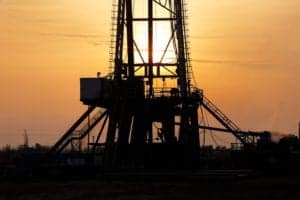The 5 Most Common Accidents in the Oil & Gas Industry
October 9, 2019 @ 9:30 am

Updated: 12/10/2021
While the oil and gas industry offers profitable employment, it also delivers a workplace that is downright dangerous. Accidents in the oil and gas industry happen all too often, and any number of government agencies carefully track in various ways the industry’s fatalities that fit their reporting criteria.
Analyzing their statistics, we begin to see the most common causes of accidents in the oil and gas industry—hazards that not only cost money but also continue to affect lives through injuries, hospitalizations and amputations each year.
1. Transportation and Motor Vehicle Accidents
Surprisingly, a leading cause of fatalities for oil and gas extraction workers is basic transportation. Transportation-related accidents account for more than 40 percent of the industry’s work-related deaths.
For oil rig workers, simply getting to and from work — often by helicopter or boat — can prove to be one of the most dangerous parts of the job. What’s more, workers for smaller companies (fewer than 20 employees) and workers for well-servicing companies seem to be at greatest risk for transportation-related accidents.
2. Slips, Trips and Falls
Oil platforms and rigs are complex, multi-level, multi-deck environments where every square foot is utilized to its full potential. Between weather, offshore conditions and the equipment needed to extract resources, workers are at constant risk for slips, trips and falls.
In fact, the vast majority of these types of accidents happen while workers are performing normal, everyday job activities.
3. Contact With Objects and Equipment
Many of the tasks involved in oil and gas extraction are high-risk activities closely associated with contact accidents. Workers are often struck by, caught by or caught between objects or pieces of equipment—often large ones with devastating results. In addition, dropped tools or shifting equipment may also fall onto workers.
OSHA states that “three out of every five on-site fatalities in the oil and gas extraction industry” are categorized as contact accidents.
4. Fires and Explosions
By its very nature, the oil and gas industry is centered on flammable materials. However, associated vapors, in-well gases, hydrogen sulfide (known as H2S or sour gas), and waste fluids can be additional flammable hazards—especially near tanks, pipelines, trucks, and extraction and production equipment. Hot work can be especially hazardous because it includes tasks like welding, cutting, burning, soldering, brazing and grinding. But at the end of the day on a busy rig, any ignition source can result in a fire or an explosion.
5. Exposure to Chemicals, Harmful Substances or Environments
Oil and gas injuries associated with exposure to harmful substances often coincide with issues regarding confined spaces or inadequate ventilation. Storage tanks, confined areas near wellheads, repurposed shipping containers, mud or reserve pits, and even protected or low open areas can allow gases or vapors to collect to hazardous levels.
4 Significant Class Action Cased You Should Know About
Get Representation for Your Oil and Gas Accident
All workers have the right to work in a safe environment. If you’ve suffered an injury from an accident while working in the oil and gas industry, you may need to fight for the compensation you’re owed to cover your medical expenses, lost wages, pain and suffering, and other losses.
Most importantly, you’ll need a team of attorneys that specializes in offshore injuries. In Louisiana, that team is Morrow, Morrow, Ryan, Bassett and Haik. Call us today at 800-356-6776 for more information.
